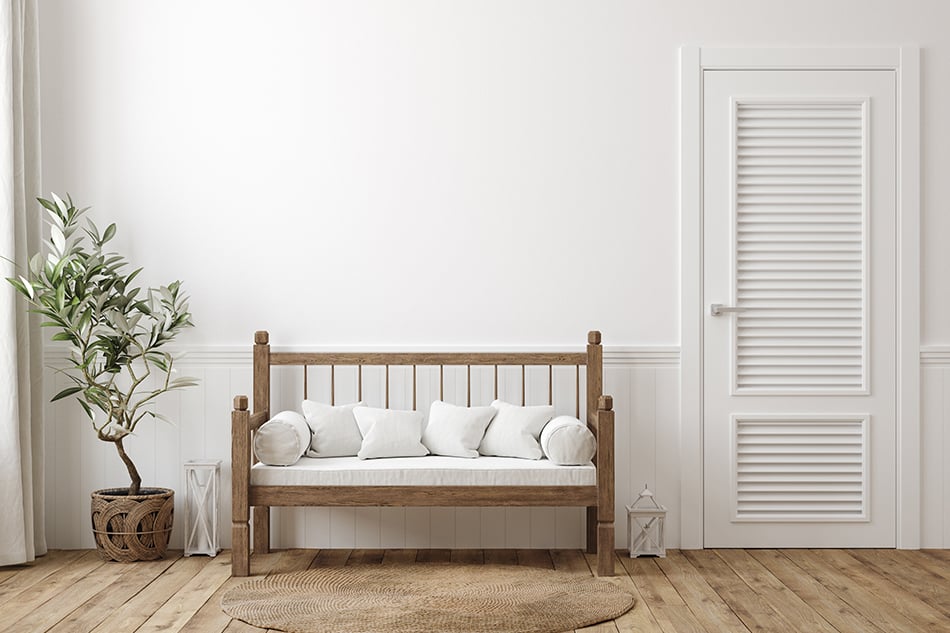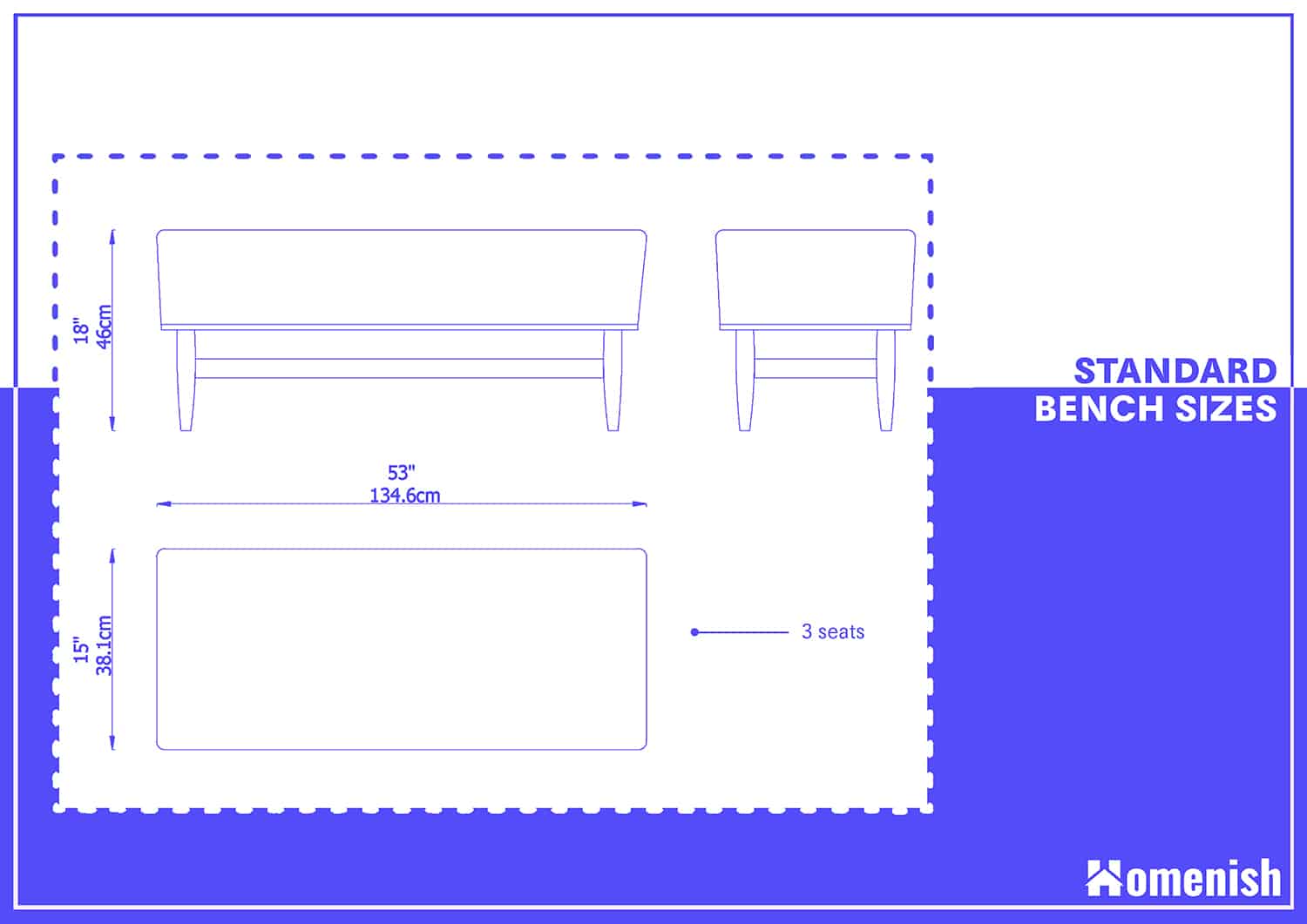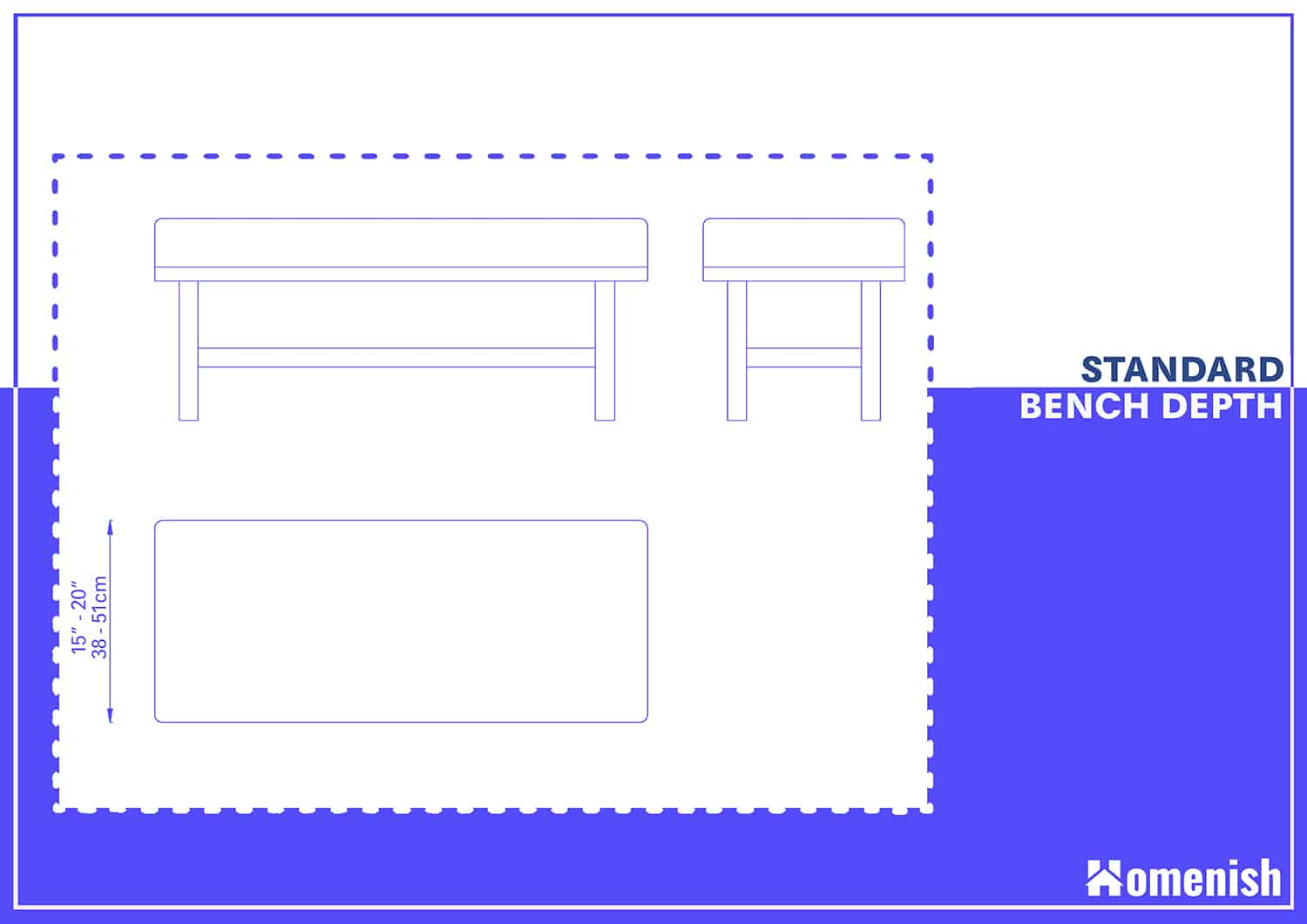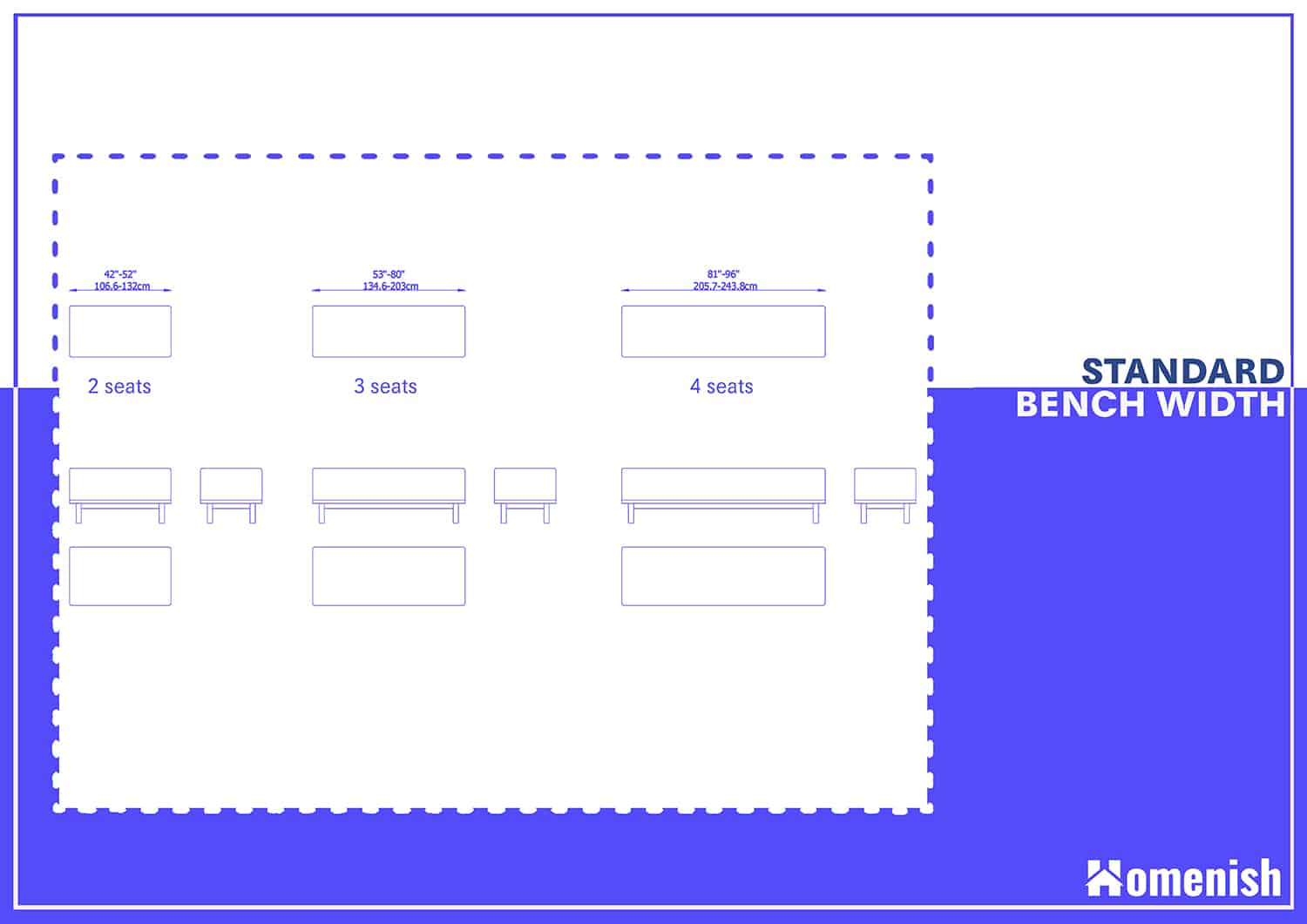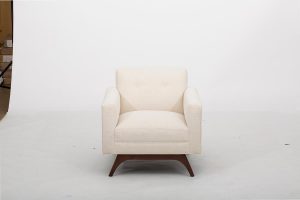If you want to get a new bench and are interested in learning about your bench sizes – height, depth, width, and clearance, here is the guide you need. We’ll give you the right dimensions, the explanations, and some exceptions to the bench sizes.
Need a quick answer? Here it is.
Whether you build an indoor or outdoor bench, the standard height for a bench (without a backrest) is between 18 and 20 inches (46-51 cm). With a backrest, the total average bench height is around from 30″ – 36″. The bench depth should be between 15 – 20 inches for someone to sit comfortably on the bench. And depending on the bench seats, the standard bench lengths can vary, specifically, a 2-seat bench is around 42 – 52 inches wide; meanwhile, a 3-seat and 4-seat bench needs a width of 53 – 80 inches and 81 – 96 inches respectively.
Standard Bench Sizes
Here is a standard bench size for a typical bench you can find on the market. This is for a 3-seat bench without a backrest. The dimensions are 53″ x 15″ x 18″ or 134cm x 38cm x 46 cm.
Standard Bench Height
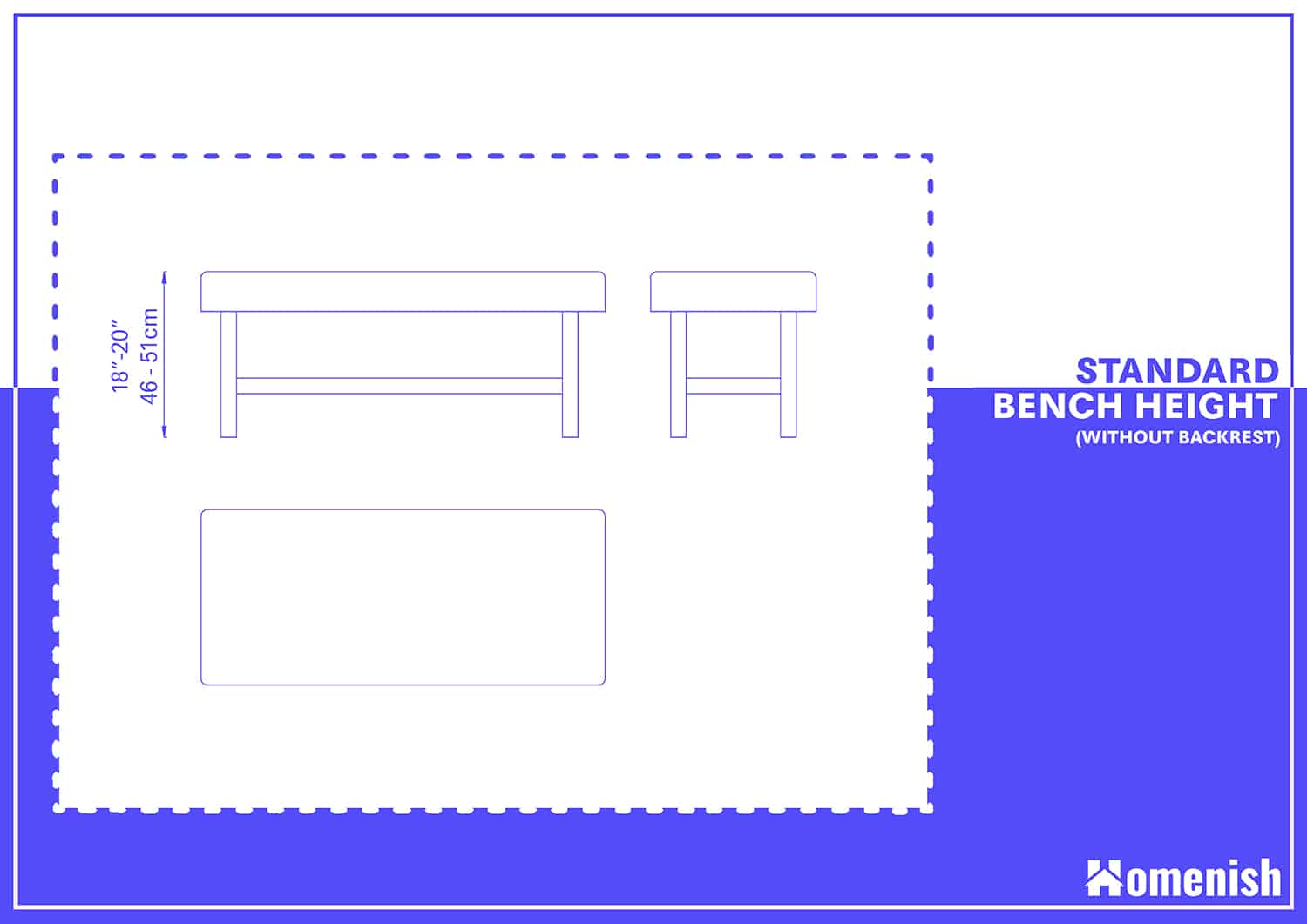
Whether you’re looking to make an outdoor bench or build one for your dining room table, the standard bench height (or standard bench seating height) is between 18 and 20 inches (46-51 cm). This provides the average adult person with a comfortable position to sit and have their feet touch the ground. It also complements the standard table size of 30 inches.
If you plan to add a pillow to your bench, cut the actual bench an inch lower. With a 1-inch pillow under your bottom, you’ll still be sitting at the standard height.
This is the height for a bench without a backrest. Adding a back to the bench will surely increase the bench’s overall height. The bench back height will typically be from 12″ to 16″ above the seat. So the total bench height with a backrest is from 30″ to 36″. See the total bench height in the diagram below.
These dimensions can also apply to the shower bench and mudroom bench; you can just adjust one or two inches for your desired comfort.
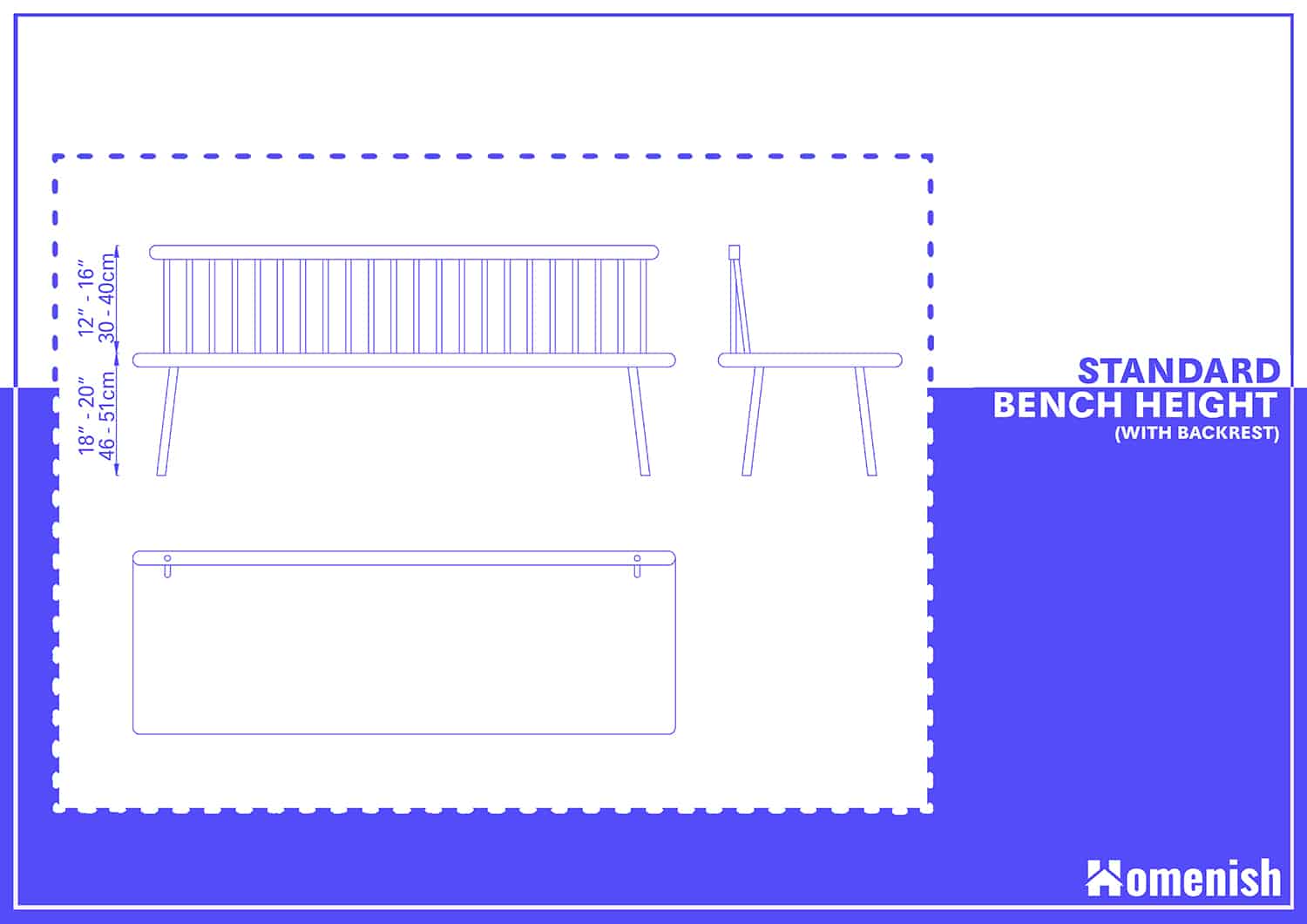
Standard Bench Depth – How Much Depth Do You Need to Sit on a Bench?
Again, this measurement is based on the build of an average adult. For someone to sit comfortably on the bench, the seat should be between 15 and 20 inches deep.
This gives people enough room to slide back and forth as they adjust the seating position without the fear of sliding off the back. It also makes you feel as if you have enough room that you don’t need to sit right at the edge of the bench. You want to be able to sit squarely on it for full weight distribution.
Of course, if you’re creating a bench meant for children, both the height and depth will be lessened.
Standard Bench Width – How Wide Should Your Bench Be?
The standard height and depth ensure people can sit on the bench comfortably. The width depends on how many people you want to be able to sit on it and the width of the space where you want to put it.
In general, a bench provides seating for two to four people. The recommended width is based on the average adult’s shoulder span, plus a foot of personal space on either side.
- For seating two people = bench width of between 42 and 52 inches
- For seating three people = bench width of between 53 and 80 inches
- For seating four people = bench width of between 81 and 96 inches
You can make benches longer, but you may need to join two planks of wood or other materials together to get the additional length.
How Much Clearance Do You Need for Your Bench?
You might have an outdoor bench or an indoor bench. If it’s outdoor, it’s probably stationary, meaning you’ve placed it next to a walkway, overlooking a view, or maybe on the front porch to sit and relax on.
For these stationary benches, you generally want to set them 36 inches away from the walkway. This gives you plenty of room to sit and stretch out your legs without your feet being in anyone’s way.
You might also have a stationary bench inside the home, for which the same 3-foot clearance rule would apply. But you could also have a bench at your dining room table, in which case people are likely to scoot it backward and forward to get up and sit down, just like they would with a dining room chair.
For moveable benches, your clearance should be 4 feet instead of 3. This gives people enough room to scoot the bench back without blocking the walkway around the table.
Dimensional Changes for Adding a Back to Your Bench
If you want to have a back to the bench, you might want to cut the bench depth to be in the 17-18-inch range. This allows people to sit against the back of the bench without the depth of the bench being so deep that they can’t comfortably bend their legs and have their feet touch the ground.
It’s also helpful to have the surface of the bench slope backward slightly. To accomplish this, you would cut the back legs of the bench one inch shorter than the front legs. This inclines the entire seat backward and ensures a comfortable posture for your back leaning against the backrest. Also, the incline isn’t so steep that it’s difficult to sit forward again.
Measurements for Adding Armrests to Your Bench
Armrests are another optional addition. Besides being a comfortable place to rest your elbow as you sip your lemonade or read your book, they’re helpful for pushing off of as you stand up. This is particularly for older people needing something to grip for stability as they stand.
The height and depth of the bench won’t change for adding armrests, but you may want to add a little more width, depending on whether you want to attach the armrests to the inside or outside of the bench seat.
The armrests themselves should be 8 inches above the bench seat and 4-5 inches wide. They should also extend to within one inch of the front of the bench. You won’t need this depth when sitting, but someone looking for help sitting or standing will use the end of the armrest.
Measurements for Other Types of Benches
So far, we’ve been talking about the types of benches you sit on. But what if you’re looking for more of a utility bench, such as one you’d put your feet on or store items in or place in the entryway for gathering belongings before you leave the house?
In these cases, your bench height can be much lower. A bench for storing and tying shoes, for example, might be 12 inches. This allows you to lift your foot slightly off the floor and bend down comfortably to tie your shoe.
A storage bench can be taller than 18 or 20 inches and deeper than 15 or 20 inches. Yes, you can sit on it, but primarily, you’ll be storing things in it, so if it stores better than sits, that’s an acceptable trade-off.
An entry bench is good for setting down the mail, keeping library books until you’re ready to take them back, etc. Because you’re primarily setting items down on and picking them up from this style of bench, you’ll want it to be higher than 20 inches.
It should be more like 30 inches, which is the standard height for a table. This allows you to not have to bend down. The bench can also be narrower than 15 inches – maybe around 12 inches – because you don’t need to sit on it but place items on it.
